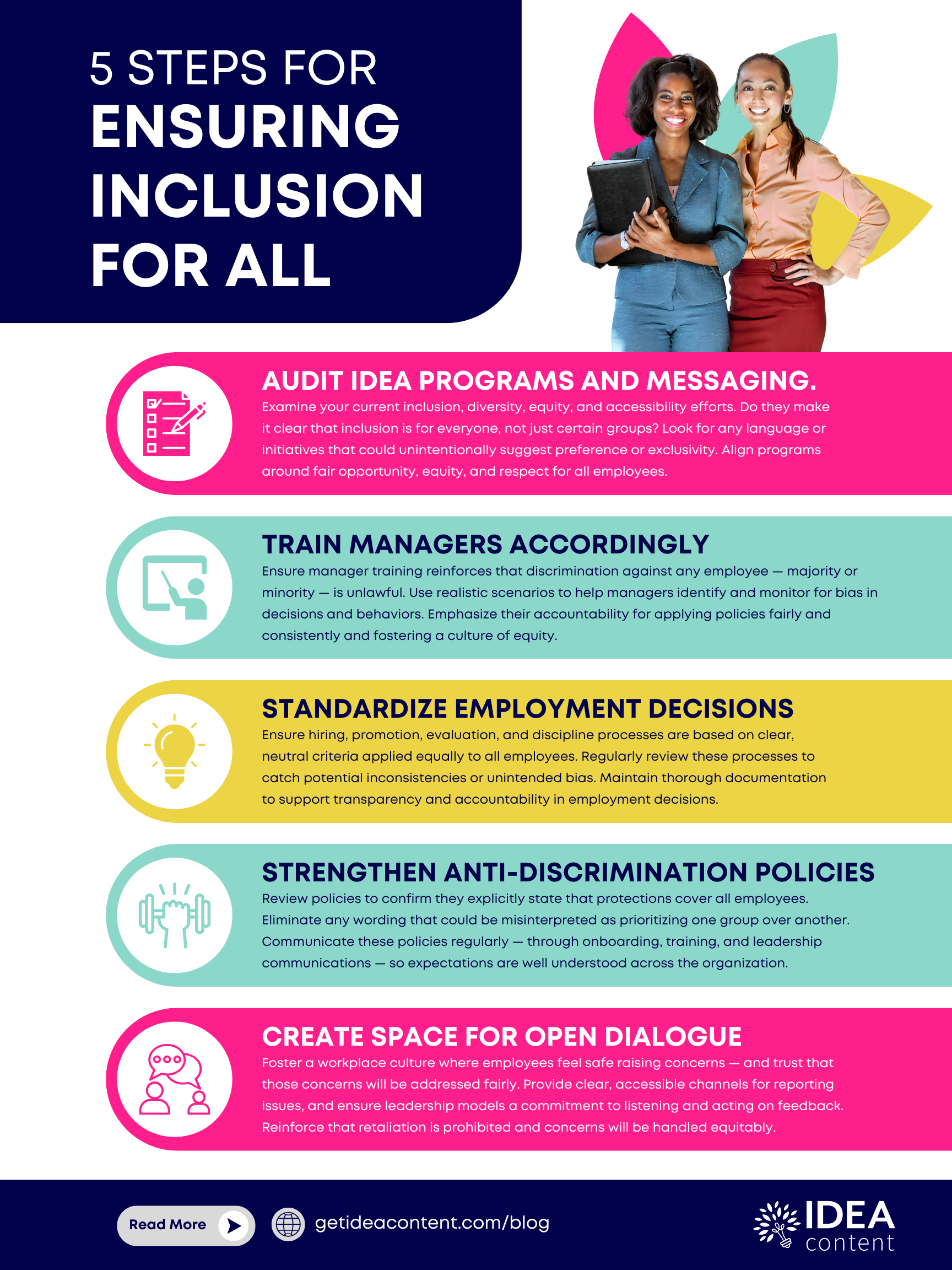After the Ames Ruling: Why Inclusive Employers Must Double Down on Fairness — For Everyone
On June 5, the U.S. Supreme Court delivered a unanimous ruling in Ames v. Ohio Department of Youth Services — a decision that could reshape how workplace discrimination claims are handled. While some are calling this the beginning of a “flood of reverse discrimination lawsuits,” let’s be clear: this is an opportunity for employers to ensure their inclusion, diversity, equity, and accessibility (IDEA) efforts are grounded in fairness for everyone.
Here’s what happened. Marlean Ames, a heterosexual white woman, alleged she was denied a promotion and later demoted because of her sex and sexual orientation. The lower court had dismissed her case, saying that, as a “majority” employee, she needed to prove extra “background circumstances” showing her employer would discriminate against her.
The US Supreme Court unanimously rejected that logic. Title VII, the Court affirmed, protects all employees equally — there are no extra burdens for “majority” or “minority” groups. Discrimination is discrimination.
The “Illegal DEI” Narrative
The Ames case is already being cited by some in the growing backlash against IDEA efforts — a backlash often framed as opposition to so-called “illegal DEI.” Critics argue that programs designed to correct systemic inequities are themselves discriminatory against majority groups.
This is a distortion — but it’s one employers need to understand and navigate. If IDEA initiatives are seen as favoring some groups at the expense of others, they become vulnerable not only to legal risk but also to culture wars.
The solution is not to abandon IDEA work — it is to root it in fairness, transparency, and a clear-eyed understanding of why these efforts exist in the first place.
The Core Issue: Bias and Privilege
At the heart of IDEA is an undeniable truth: historically marginalized groups have faced systemic barriers to advancement in the workplace — barriers rooted in bias and privilege.
Women, people of color, LGBTQIA+ employees, people with disabilities, and others have not had equal access to opportunity because of bias, privilege, and other factors, through no fault of their own. That’s why targeted IDEA efforts remain necessary: to level a playing field that has never been level.
But here’s the nuance: while bias and privilege shape outcomes for marginalized groups, individual bias can affect anyone. No employee should face discrimination, and no group should be excluded from the promise of inclusion. The Ames decision underscores that IDEA efforts must reflect this balance.
Infographic of the 5 Steps for Ensuring Inclusion for All
What Employers Should Do Now
Employers serious about IDEA — and about risk management — should act now:
✅ Audit IDEA programs and messaging. Ensure they reflect inclusion for everyone, not just certain groups.
✅ Train managers accordingly. Discrimination against anyone — majority or minority — is unlawful. Use realistic scenarios to help managers identify and monitor for bias in decisions and behaviors.
✅ Standardize employment decisions. Hiring, promotion, evaluation, and discipline should be grounded in neutral, objective, consistently applied criteria.
✅ Strengthen anti-discrimination policies. Policies must clearly prohibit discrimination against any employee.
✅ Create space for open dialogue. Employees must feel safe voicing concerns, and confident they’ll be heard.
Moving Forward — Together
As attorney Chris Braham noted: “There is no such thing as reverse discrimination. Any decision predicated on someone’s race or gender is impermissible.”
That’s the principle employers must champion.
The Ames decision is not a signal to abandon IDEA — it’s a reminder to do it right. To acknowledge both bias and privilege. To build workplaces where equity and fairness are for everyone — and where no employee is left behind.
Inclusion matters. Let’s make it work for everyone. Click here to see how IDEA Content can help your organization thrive.

